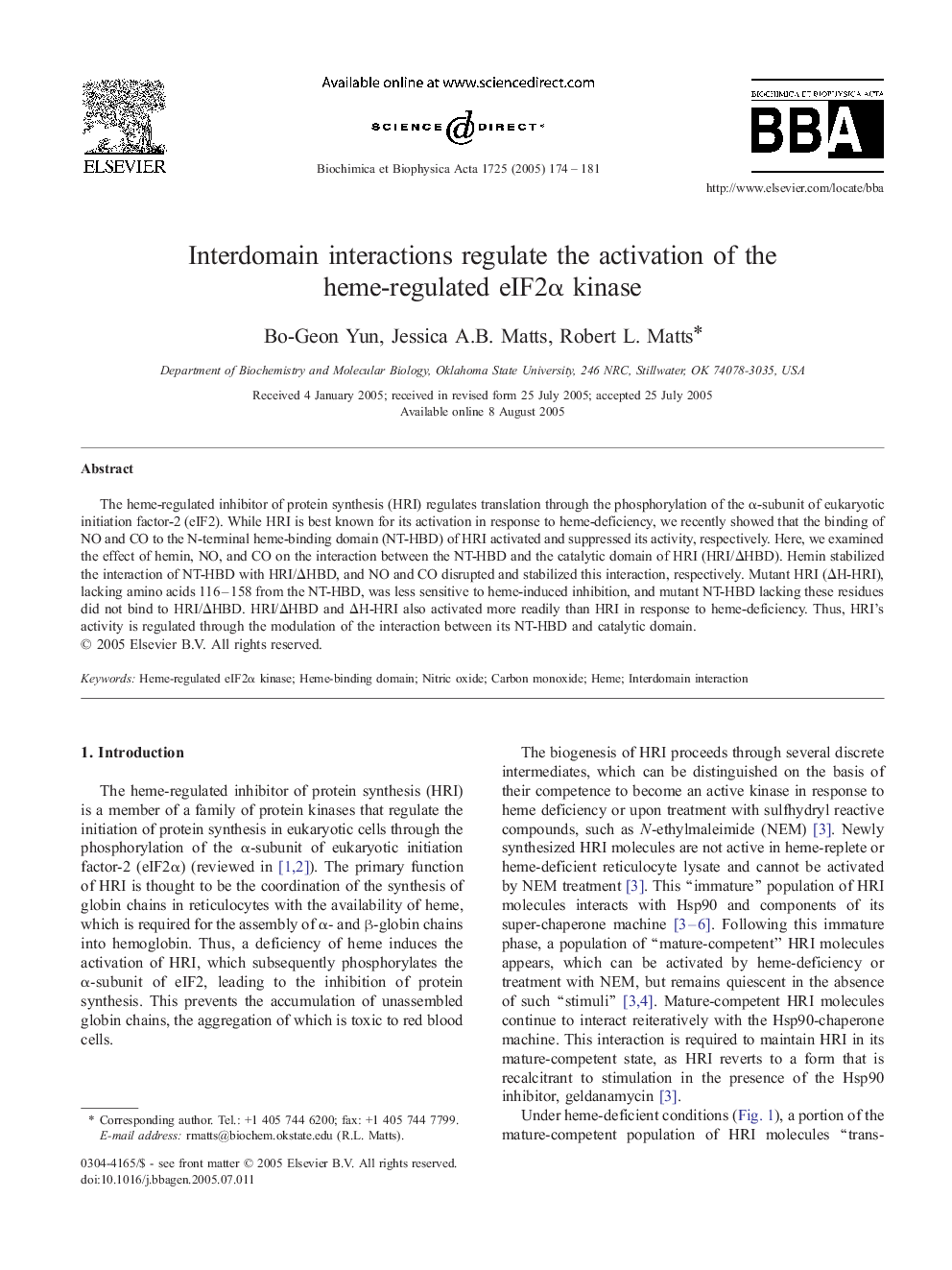| Article ID | Journal | Published Year | Pages | File Type |
|---|---|---|---|---|
| 10801037 | Biochimica et Biophysica Acta (BBA) - General Subjects | 2005 | 8 Pages |
Abstract
The heme-regulated inhibitor of protein synthesis (HRI) regulates translation through the phosphorylation of the α-subunit of eukaryotic initiation factor-2 (eIF2). While HRI is best known for its activation in response to heme-deficiency, we recently showed that the binding of NO and CO to the N-terminal heme-binding domain (NT-HBD) of HRI activated and suppressed its activity, respectively. Here, we examined the effect of hemin, NO, and CO on the interaction between the NT-HBD and the catalytic domain of HRI (HRI/ÎHBD). Hemin stabilized the interaction of NT-HBD with HRI/ÎHBD, and NO and CO disrupted and stabilized this interaction, respectively. Mutant HRI (ÎH-HRI), lacking amino acids 116-158 from the NT-HBD, was less sensitive to heme-induced inhibition, and mutant NT-HBD lacking these residues did not bind to HRI/ÎHBD. HRI/ÎHBD and ÎH-HRI also activated more readily than HRI in response to heme-deficiency. Thus, HRI's activity is regulated through the modulation of the interaction between its NT-HBD and catalytic domain.
Related Topics
Life Sciences
Biochemistry, Genetics and Molecular Biology
Biochemistry
Authors
Bo-Geon Yun, Jessica A.B. Matts, Robert L. Matts,
